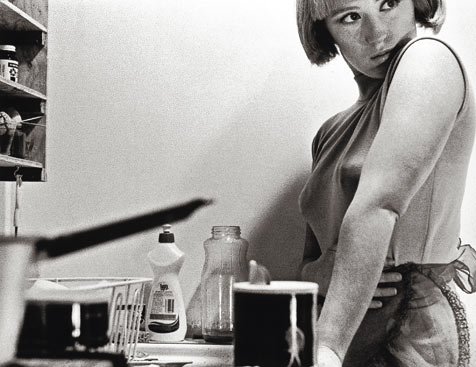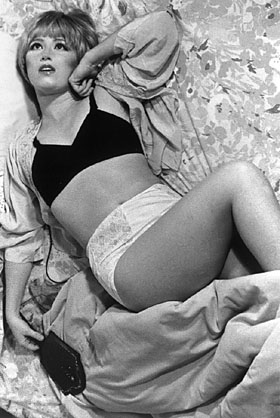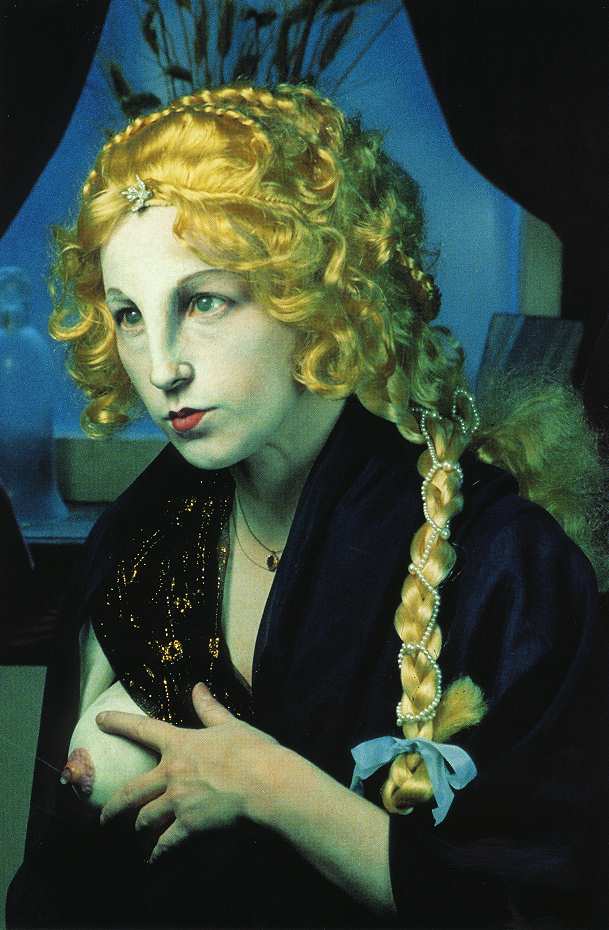Portraiture is a type of photography that arose almost as soon as the invention, and popularisation, of the camera. It is simple in nature, a camera is placed in a specific way to capture a still image of a person and/or people to preserve their existence and who they "were". A simple portrait photograph could be much like the one below, a self portrait of Edward S. Curtis, one of the first portraiture photographers.

Since inception portraiture has kept to its simple roots, but it has mutated beyond recognition as well. Lets look at two portraiture photographers and how their portrait photographs have changed the world of photography as we know it.
Diane Arbus
"A photograph is a secret about a secret. The more it tells you the less you know." - Diane Arbus

Diane Arbus was a photographer who focused on portraiture that includes subjects of people who are considered unusual or weird. Her word has drawn huge opposition and praise, proponents of her work consider her a daring photographer who captured people that would normally be shunned by society and challenged the viewer on their morals and views of society and people. Critics consider her work self indulgent and exploitative.

Diane Arbus's work primarily focuses on portraiture and the art of capturing of ordinary life. More specifically, Diane evokes the capturing of the ordinary lives of the extraordinary people who live them. These people are viewed, subjectively of course, as people who lived in the fringe of society. In informal terms, these types people were considered weird by others who consider themselves as "normal".
Diane Arubus's work is fascinating as it generally captured a lot of surreal imagery of people with strange tastes in fashion bordering on the macabre. Bear in mind her photographic work was taken in the 1970's, an era which, although slightly more embraceful of unusual tastes due to the social changed brought on largely during the 60's, an era that still had strong bigoted views and one which people openly shunned those who were considered unusual.
Diane Arbus liked to photograph homosexuals, disabled people, people with unusual tastes and styles, people who gathered at unusual places, and simply plain and untoward people that were normal. One notable trait of her pictures is that her subjects are often captured as if the camera wasn't there. Rarely do her subjects look into the camera, unless this adds to the artistic quality of the picture. Her subjects often look through the camera or past it, almost as if her photos were a fly on the wall insight into their lives, a mundane event of less than mundane people captured for eternity for our pleasure. This is also known as a Candid portrait
Diane always took her pictures on silver plate emulsion, so her photographs were a rich black and silver colour. In my opinion this made her pictures even more unusual, you look at the subjects with an almost dim view of your own. You would expect these people to have colourful lives and attire, and the fact that you cannot the blast of colour you would be expected to be assaulted by if you met one of these people, your attitude towards them is somewhat more relaxed. You feel as though, without the colour that would be associated with unusual people, that they are simply just like you, but they just have unusual tastes. You then realise, despite the normality you think your life is based around, might be just as unusual to these people. You almost start to picture yourself in a Diane Arbus photograph, how would people view you if you were in a Diane Arbus portrait photograph?
Here are a few examples:


Cindy Sherman
"I didn't have any interest in traditional art. -
Cindy Sherman
Another famous portraiture photographer is Cindy Sherman. Much like Diane Arbus, Sherman's photographs are extremely unusual and bizarre, however her photographs are stylistically much more sexualised and tend to portray women in risque situations as though she has stumbled them by chance. Often her photographs include mannequins and models with sexual organs either sculpted onto them or (deliberately) missing parts that would imply sexuality in the model:
Originally Sherman, as a photographer, only took self portraits. These images, once released, launched her into fame and her pictures were titled "Film Stills" and they began a whole new form of photography. Her photographs were stylish, artsy and showed every day life almost like it was a movie.
"The still must tease with the promise of a story the viewer of it itches to be told" - Cindy Sherman


If you look at the images, they do tease you with an almost unfolding story that, if you had further images or even a video, would reveal to you a narrative and a plot. Since there are no other images, you start to draw your own conclusions from the "story" the pictures are trying to tell you, leaving you to spend hours making up your own creative and interesting anecdote from one picture. This shows the power of photography at its finest, not only does a simply image provoke so many different subtexts and ideas that are left open to you to interpret, they make you want more so you are not left hanging. You want the full story, you want the image to turn into a movie so you know just what has happened before and after the still was taken. Hence the term "Movie Stills".
Since her rise to fame, Sherman has raised questions about the sexualisation of women in the media and artistic world. The pictures she has taken of mannequins with sexual organs shows her cynical attitude that women are often treated no better than objects by photographers and media producers. She places the mannequins in realistic and human like poses and makes them seem "indifferent" to their exploitation. It's almost if Sherman views the women who are perfectly happy to be exploited in this way as no better than these mannequins, a plastic model to be posed and exploited in any way chosen. However, a non-feminist or a man would perhaps miss the message of these photographs and view then ass simply being odd. The message the photographs contain rely completely on the open mindedness of the viewer, a closed minded person would completely overlook the message contained and see nothing but sexually abhorrent imagery.



Cindy also took historical portraiture photographs. They are intended to replicate the portrait oil-paintings that were largely replaced by portraiture photographs when the camera gained wide-spread adoption.


Conclusions
In my opinion, portraiture is as interesting as it is diverse. Portraiture can be a simple photograph of family members trying to preserve a moment, they could be photographs intended to show the difference in culture, ideology, and personal taste while at the same time proving we are all still human (shown in Diane Arbus' work), and they can be used to create a narrative or communicate a message. Just like any other form of photography, the message of the photograph, or its content, relies on the individual viewing them. This is the beauty of photography, the photograph is as much your own as it is the photographers, because only you and your own unique personality can really dictate what the photograph contains and what it really says to you through the imagery it contains.
